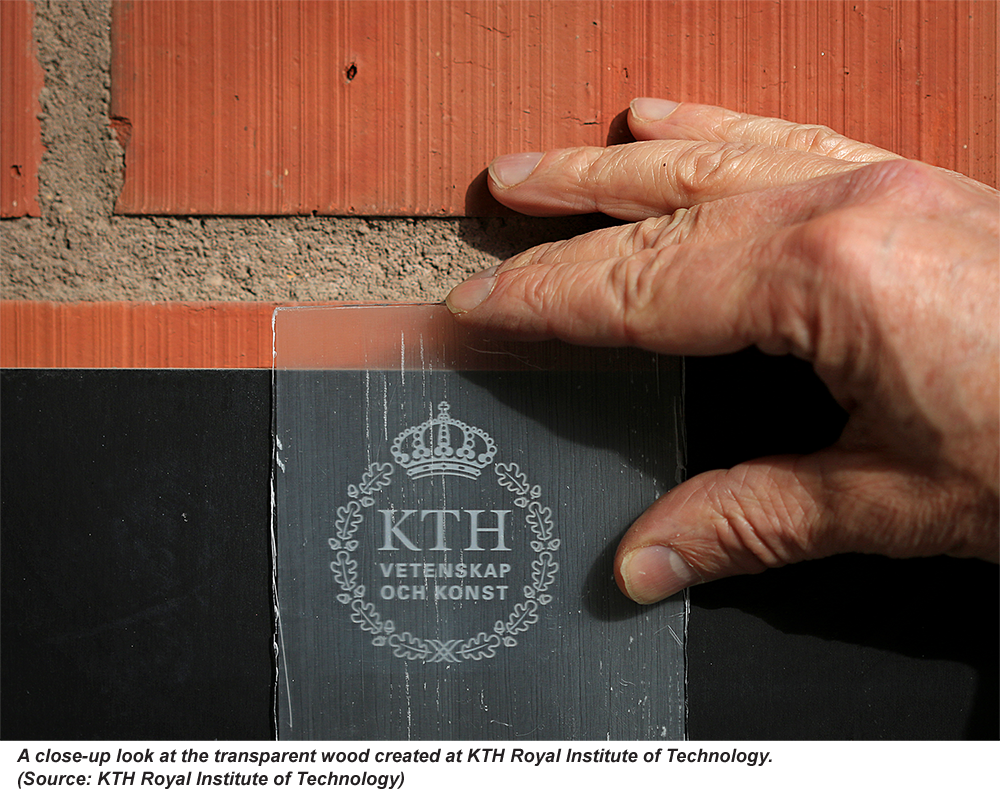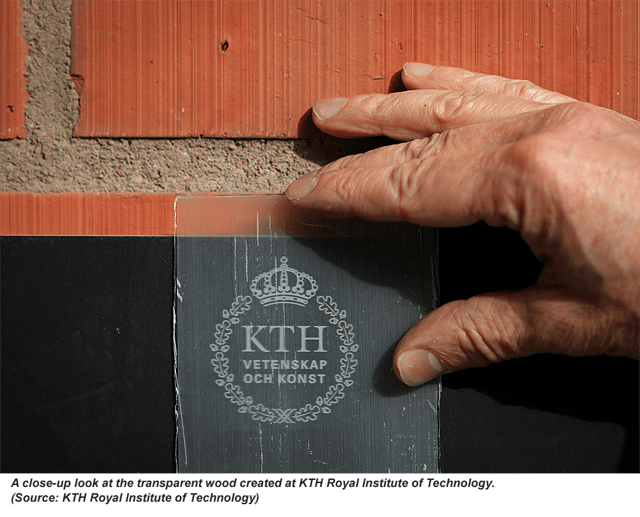1 min read
Clear as Wood? Swedes Develop Transparent Wood Material for Solar Panels and Windows
John Greene
:
May 10, 2016

Wood is one of the Earth’s most trusted and sustainable natural resources. From building materials and industrial heating pellets, to food additives and jet fuels, wood raw materials are used to manufacture a growing number of products in the new biobased economy. Now, researchers at Stockholm's KTH Royal Institute of Technology have developed a new transparent wood material that's suitable for mass production of windows and solar panels. The project is financed by the Knut and Alice Wallenberg Foundation, and the finding was published in the American Chemical Society journal, Biomacromolecules.
Lars Berglund, professor at Wallenberg Wood Science Center at KTH, says that while optically transparent wood has been developed in the past for microscopic samples in the study of wood anatomy, the KTH project introduces a new method for using the material on a large scale.
These transparent wood-based products are ideal for use as solar panels, but can also be used for windows and semi-transparent facades where the objective is to allow light in while maintaining privacy. The optically transparent wood is a type of wood veneer in which the lignin, a component of the cell walls, has been chemically removed.

"Transparent wood is a good material for solar cells, since it's a low-cost, readily available and renewable resource," notes Berglund. "This becomes particularly important in covering large surfaces with solar cells. When the lignin is removed, the wood becomes beautifully white. But because wood is not naturally transparent, we achieve that effect with some nanoscale tailoring," he adds. The white porous veneer substrate is impregnated with a transparent polymer and the optical properties of the two are then matched.
Next steps for this project include enhancing the transparency of the finished material and scaling up the manufacturing process. "No one has previously considered the possibility of creating larger transparent structures for use as solar cells and in buildings," Berglund adds. “Wood is by far the most used bio-based material in buildings. It's attractive that the material comes from renewable sources. It also offers excellent mechanical properties, including strength, toughness, low density and low thermal conductivity."





